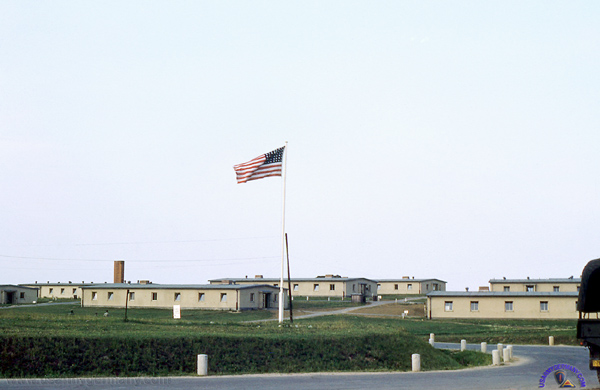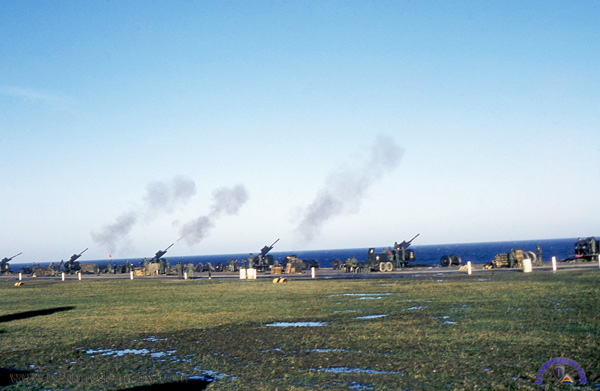| If you do
NOT see the Table of Contents frame to the left of this page, then
Click here to open 'USArmyGermany' frameset |
||||||||||||||||||||||||||||||||||||||||||||||||||||||||||||||||||||||||||||||||||||||||||||||||||||||||||||||||||||||||
|
34th
Antiaircraft Artillery Brigade |
||||||||||||||||||||||||||||||||||||||||||||||||||||||||||||||||||||||||||||||||||||||||||||||||||||||||||||||||||||||||
|
|
||||||||||||||||||||||||||||||||||||||||||||||||||||||||||||||||||||||||||||||||||||||||||||||||||||||||||||||||||||||||
|
||||||||||||||||||||||||||||||||||||||||||||||||||||||||||||||||||||||||||||||||||||||||||||||||||||||||||||||||||||||||
|
|
||||||||||||||||||||||||||||||||||||||||||||||||||||||||||||||||||||||||||||||||||||||||||||||||||||||||||||||||||||||||
| History | ||||||||||||||||||||||||||||||||||||||||||||||||||||||||||||||||||||||||||||||||||||||||||||||||||||||||||||||||||||||||
| 1952 | ||||||||||||||||||||||||||||||||||||||||||||||||||||||||||||||||||||||||||||||||||||||||||||||||||||||||||||||||||||||||
| (Source: STARS & STRIPES, Feb 21, 1952) | ||||||||||||||||||||||||||||||||||||||||||||||||||||||||||||||||||||||||||||||||||||||||||||||||||||||||||||||||||||||||
| According to the article, the 34th AAA Brigade was activated as a training center (also as the first AAA Brigade in the Cold War) in 1948 and stationed at Fort Bliss, TX. In 1950, the brigade was assigned to 1st Army and relocated to New York City. In May 1951, the brigade was deployed to Europe and set up shop in Mannheim. In addition to the brigade, several AAA battalions arrived in Europe and AAA assets in theater grew from a few separate AAA battalions to a full brigade plus additional battalions assigned to 7th Army divisions. The 260th AAA Group is a District of Columbia National Guard unit. It was the first NG unit assigned to NATO to arrive in Europe. (The 12th AAA Gp also arrived in 1951; the 242nd AAA Gp was in shipment to Europe at the time the article was written.) The 34th AAA Bde contains both heavy gun (90mm) units as well as mobile automatic weapons units. The heavy guns can be used against high altitiude aircraft as well as against armored vehicles and other targets on the ground. The automatic weapons are used against low altitude aircraft or ground targets in direct support of infantry. Brigade units participated in recent field maneuvers: "Operation Cirrus" and "Exercise Combine." Additional training has been conducted at Putlos training area (British Zone); Grafenwoehr (US Zone) and Baumholder (French Zone). |
||||||||||||||||||||||||||||||||||||||||||||||||||||||||||||||||||||||||||||||||||||||||||||||||||||||||||||||||||||||||
| (Source: Email from Don Thompson, HHB, 34th AAA Bde) | ||||||||||||||||||||||||||||||||||||||||||||||||||||||||||||||||||||||||||||||||||||||||||||||||||||||||||||||||||||||||
| I was browsing and came across the 34th AAA Brigade history. I also served in the HQ's company at Funari Barracks from Dec 1953 to Dec 1956, just out of Basic at Camp Gordon. I was trained as an MP but when our ship (Upshur) delivered us to Zweibruecken, we were all reclassified. I was reclassified as a light truck driver/field wireman. All my time was spent in the motor pool as the (driver for) the deputy commander to BG McConnell. I believe his name was Abergotti or someting like that. I have fond memories of Kaefertal (the Tankstelle) where we hung out with the Fraeuleins, drinking flip tops and eating schnitzel sandwiches. One thing a GI could look forward to during that era were the USAREUR alerts, 7th Army alerts, and Brigade alerts. Our alert area was in Kaiserslautern. In Jan 1954 I went on my first alert and I had never been so cold before. As for a reunion, I think it would be great if a few of us could get together and remember the good old days with the 34th AAA. |
||||||||||||||||||||||||||||||||||||||||||||||||||||||||||||||||||||||||||||||||||||||||||||||||||||||||||||||||||||||||
| 1954 | ||||||||||||||||||||||||||||||||||||||||||||||||||||||||||||||||||||||||||||||||||||||||||||||||||||||||||||||||||||||||
| (Source: Seventh Army Annual Historical Report FY 1954) | ||||||||||||||||||||||||||||||||||||||||||||||||||||||||||||||||||||||||||||||||||||||||||||||||||||||||||||||||||||||||
| ORGANIZATION (30 June 1954): | ||||||||||||||||||||||||||||||||||||||||||||||||||||||||||||||||||||||||||||||||||||||||||||||||||||||||||||||||||||||||
|
||||||||||||||||||||||||||||||||||||||||||||||||||||||||||||||||||||||||||||||||||||||||||||||||||||||||||||||||||||||||
| (Source: Email from Robert R. Creekmore) | ||||||||||||||||||||||||||||||||||||||||||||||||||||||||||||||||||||||||||||||||||||||||||||||||||||||||||||||||||||||||
| Meteorology Section I was a corporal assigned to Hq. Battery, 34th AAA Brigade, Funari Barricks, Kafertal from April 1954 until September 1955 I took basic training at Fort Jackson, SC, then Ballistic Meteorology School at Ft. Sill, OK, then shipped to Germany in April 1954 on the USS Blatchford, a "one stacker." We had two meteorolgy sections at Hq Battery. Mr. James Beaucamp, Warrant Officer was our section officer. Sgt. Donald Skibo was our non-com in charge, and some of the guys in the section were: Robert Creekmore (me), James H. Barnes, James Funke, Louis C. Arthur, George Harvard, Donald Dotson, Jack Herman, ? Avery, We did a lot of TDY for the AAA Batallions. We were in Karlsruhe, Kaiserslautern, Stuttgart, Baumholder, Vilseck, Todendorf on the Baltic, and several other places. Gen. McConnell was there at the time, as was Col Renquist. Our company commander was William O. Hazlett. I have looked in my American Legion magazine for years regarding a reunion of the 34th, but have never seen one. |
||||||||||||||||||||||||||||||||||||||||||||||||||||||||||||||||||||||||||||||||||||||||||||||||||||||||||||||||||||||||
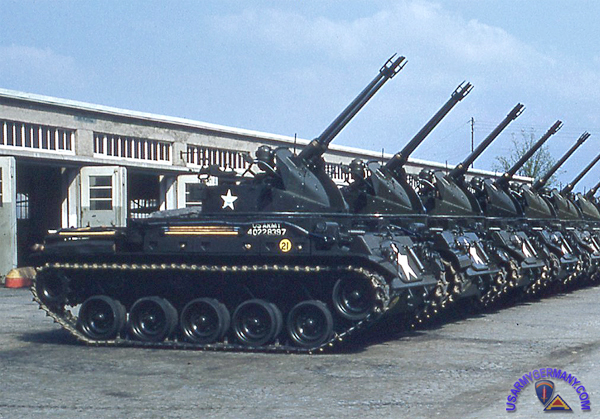 M42 twin 40-mm self-propelled guns of an unidentified AAA AW BN, SP, mid-1950s |
||||||||||||||||||||||||||||||||||||||||||||||||||||||||||||||||||||||||||||||||||||||||||||||||||||||||||||||||||||||||
| 1955 | ||||||||||||||||||||||||||||||||||||||||||||||||||||||||||||||||||||||||||||||||||||||||||||||||||||||||||||||||||||||||
| (Source: Elvin Pauls, Hq & Hq Btry, 34th AAA Bde, 1955-1957) | ||||||||||||||||||||||||||||||||||||||||||||||||||||||||||||||||||||||||||||||||||||||||||||||||||||||||||||||||||||||||
|
||||||||||||||||||||||||||||||||||||||||||||||||||||||||||||||||||||||||||||||||||||||||||||||||||||||||||||||||||||||||
(Click here to view Elvin's great Atomic Annie (280mm gun) photo on the Overview Page, Field Artillery.) |
||||||||||||||||||||||||||||||||||||||||||||||||||||||||||||||||||||||||||||||||||||||||||||||||||||||||||||||||||||||||
|
||||||||||||||||||||||||||||||||||||||||||||||||||||||||||||||||||||||||||||||||||||||||||||||||||||||||||||||||||||||||
| 1956 | ||||||||||||||||||||||||||||||||||||||||||||||||||||||||||||||||||||||||||||||||||||||||||||||||||||||||||||||||||||||||
| (Source: Seventh Army Annual Historical Report FY 1956) | ||||||||||||||||||||||||||||||||||||||||||||||||||||||||||||||||||||||||||||||||||||||||||||||||||||||||||||||||||||||||
| ORGANIZATION (30 June 1956): | ||||||||||||||||||||||||||||||||||||||||||||||||||||||||||||||||||||||||||||||||||||||||||||||||||||||||||||||||||||||||
|
||||||||||||||||||||||||||||||||||||||||||||||||||||||||||||||||||||||||||||||||||||||||||||||||||||||||||||||||||||||||
|
|
||||||||||||||||||||||||||||||||||||||||||||||||||||||||||||||||||||||||||||||||||||||||||||||||||||||||||||||||||||||||
| The AAA Gun Bn
(90mm) consisted of a HQ & HQ Btry and four firing batteries (A, B,
C, & D). Each firing battery had four towed 90mm guns M2, a trailer-mounted SCR-584 radar, a trailer-mounted M9 fire control system, and other pieces of equipment. In 1951 or 1952, the SCR-584 equipment was replaced by a new fire control system called the Fire Control System M33. |
||||||||||||||||||||||||||||||||||||||||||||||||||||||||||||||||||||||||||||||||||||||||||||||||||||||||||||||||||||||||
|
|
||||||||||||||||||||||||||||||||||||||||||||||||||||||||||||||||||||||||||||||||||||||||||||||||||||||||||||||||||||||||
| 1956 | ||||||||||||||||||||||||||||||||||||||||||||||||||||||||||||||||||||||||||||||||||||||||||||||||||||||||||||||||||||||||
| (Source: STARS & STRIPES, March 22, 1956) | ||||||||||||||||||||||||||||||||||||||||||||||||||||||||||||||||||||||||||||||||||||||||||||||||||||||||||||||||||||||||
| In a brief note on command changes within the 34th AAA Brigade, S&S reported that the 34th AAA Brigade was the largest non-divisional unit in Europe (USAREUR). | ||||||||||||||||||||||||||||||||||||||||||||||||||||||||||||||||||||||||||||||||||||||||||||||||||||||||||||||||||||||||
| 1958 | ||||||||||||||||||||||||||||||||||||||||||||||||||||||||||||||||||||||||||||||||||||||||||||||||||||||||||||||||||||||||
| (Source: STARS & STRIPES, July 3, 1958) | ||||||||||||||||||||||||||||||||||||||||||||||||||||||||||||||||||||||||||||||||||||||||||||||||||||||||||||||||||||||||
| In an S&S article commemorating the 10th Anniversary of the 32nd AADC's presence in Germany, some unit historical information was presented: 1st AAA Group (four AAA battalions) and 12th AAA Group (four AAA battalions), both initially assigned to the 34th AAA Bde, were reassigned to the 32nd AAA Bde upon that unit's arrival in Germany mid-1957. The 34th AAA Bde was inactivated in October 1958. |
||||||||||||||||||||||||||||||||||||||||||||||||||||||||||||||||||||||||||||||||||||||||||||||||||||||||||||||||||||||||
| 504th Operation Detachment | ||||||||||||||||||||||||||||||||||||||||||||||||||||||||||||||||||||||||||||||||||||||||||||||||||||||||||||||||||||||||
| 1955 | ||||||||||||||||||||||||||||||||||||||||||||||||||||||||||||||||||||||||||||||||||||||||||||||||||||||||||||||||||||||||
| (Source: Email from James Slack, 504th Opn Det) | ||||||||||||||||||||||||||||||||||||||||||||||||||||||||||||||||||||||||||||||||||||||||||||||||||||||||||||||||||||||||
| I was commissioned
a 2nd Lt. through the ROTC program at Utah State University and ordered
to training at Fort Bliss in October of 1954. Got married to my college
sweetheart in Price, Utah on March 19th, 1955, after completion of
training and then sent to Germany. We traveled concurrently aboard the USS General Butner from New York to Bremerhaven, then by train to Mannheim where we were met by the unit exec. I was assigned to the 504th Ops Detachment, part of HQ Company of the 34th AAA Brigade. General McDonnell was (34th AAA) Brigade Commander. We were Headquartered in Funari Barracks, Mannheim/Kafertal. I was a 1st Lt and was there from late 1954 to September 1956. The 504th set up and operated the Air Control Command Center for the General (CG of the 34th AAA Brigade). We would receive information on incoming enemy aircraft (during drills) and plot positions on a large plotting board. This information was then relayed by radio and land line to the Groups and Battalions who used their long range acquisition radars to pick up the aircraft and then the batteries would use their radars (as in the pictures below) to lock on to targets and feed info on speed and altitude to the guns. This was all done by computer. The gun crews would insert a round into the fuse timer, load and fire. We would conduct field exercises about twice a year - set up the Air Control Command Center in a huge 90 x 90 circus type tent. No firing on these exercises. To actually exercise the guns, the units would ship by train to the North Sea. The wife and I were quartered in an area know as "Little America". This was a huge apartment complex constructed in Mannheim near Funari Barracks especially for service personnel and their families. Needles to say, the complex was excellent - 4 stories, 4 apartments to a floor and completely furnished. The correspondence I sent came from some former AAA people who replied to a notice I published in the VFW Magazine about a reunion for the 34th and 504th. Very few responses. No reunion. I think a web site may help to bring some of those that served in Germany during the 50's together. Our mission was defense of the Rhine River Bridge. We were equipped with 90 mm and 120 mm AA guns and the service was just converting to Nikes when I left. Always wondered if we could have shot up Russian Migs with the 90's and 120's. |
||||||||||||||||||||||||||||||||||||||||||||||||||||||||||||||||||||||||||||||||||||||||||||||||||||||||||||||||||||||||
|
|
||||||||||||||||||||||||||||||||||||||||||||||||||||||||||||||||||||||||||||||||||||||||||||||||||||||||||||||||||||||||
| (Source: Email from John King) | ||||||||||||||||||||||||||||||||||||||||||||||||||||||||||||||||||||||||||||||||||||||||||||||||||||||||||||||||||||||||
| I recently read
an email from 2nd Lt. James Slack, 504th Opn Det, providing some past
history on the 34th AAA Brigade. I also served in Germany at the same
time as Lt. Slack. His condensed history of the 34th AAA Bde is pretty
much as I remember it. I have one minor correction: from 1955 to 1956 I was assigned to the 40th AAA Gun Bn. The location was not Rhein Ksn, Wiesbaden but Kleber Ksn, Kaiserslautern. This is just a point of fact, hoping that the history of the 34th stays correct. Each AAA unit had a crest and motto, our motto was "Defend or Die". Thank You Lt. Slack for keeping this small part of our military history alive. |
||||||||||||||||||||||||||||||||||||||||||||||||||||||||||||||||||||||||||||||||||||||||||||||||||||||||||||||||||||||||
|
|
||||||||||||||||||||||||||||||||||||||||||||||||||||||||||||||||||||||||||||||||||||||||||||||||||||||||||||||||||||||||
| (Source: Email from Charles E. Rogers) | ||||||||||||||||||||||||||||||||||||||||||||||||||||||||||||||||||||||||||||||||||||||||||||||||||||||||||||||||||||||||
| I served with
the 504 AAA Operation Detachment at Funari Barracks, Kafertal, Germany
attached to 34th AAA Brigade. Our group was there during the early
1950's. I am including a history of the group that was written June 21, 1954 and published on a roster written for Brig.General Frank C. McConnell. We have been researching the unit and members of the group for reunion purposes. As you well know such research is a constant treasure hunt. Charles Rogers |
||||||||||||||||||||||||||||||||||||||||||||||||||||||||||||||||||||||||||||||||||||||||||||||||||||||||||||||||||||||||
| UNIT HISTORY The 504th AAA Operations Detachment was originally activated in the ETO at Great Chesterford, Essex, England, on 30 April 1944 as the 153rd AAA Operations Detachment in accordance with T/O & E 44 7, dated 28 February 1944. During World War II this unit received battle participation credits for the following Campaigns: (1) Northern France, (2) Central Europe, (3) Rhineland, and (4) Ground Combat. European-African-Middle Eastern Theater. The 153rd was transferred in an inactive status to the control of the War Department concurrently with its inactivation in September 1945 at Camp Kilmer, New Jersey. On 13 October 1948 the 153rd AAA Operations Detachment was re-designated the 504th AAA Operations Detachment and designated a Regular Army Unit. During June 1949 the 504th AAA Operations Detachment was activated and assigned to the Fourth Army at Fort Bliss, Texas as a General Reserve Unit. Upon completion of training the unit was transferred to Fort Devens, Massachusetts in August 1950. The 504th AAA Operations Detachment was assigned to the 80th AAA Group at Fort Devens, Massachusetts. During the month of December 1950 the 504th AAA Operations Detachment was transferred to Fort Wadsworth, New York. From Fort Wadsworth the unit was transferred in April 1951 to its present overseas station in Mannheim, Germany where it is currently assigned to 34th AAA Brigade. |
||||||||||||||||||||||||||||||||||||||||||||||||||||||||||||||||||||||||||||||||||||||||||||||||||||||||||||||||||||||||
|
|
||||||||||||||||||||||||||||||||||||||||||||||||||||||||||||||||||||||||||||||||||||||||||||||||||||||||||||||||||||||||
| Todendorf AAA Range | ||||||||||||||||||||||||||||||||||||||||||||||||||||||||||||||||||||||||||||||||||||||||||||||||||||||||||||||||||||||||
| 1953 | ||||||||||||||||||||||||||||||||||||||||||||||||||||||||||||||||||||||||||||||||||||||||||||||||||||||||||||||||||||||||
| (Source: STARS & STRIPES, May 18, 1953) | ||||||||||||||||||||||||||||||||||||||||||||||||||||||||||||||||||||||||||||||||||||||||||||||||||||||||||||||||||||||||
| The Todendorf AAA Range was officially opened recently with Btry B, 95th AAA Gun Bn blasting a target sleeve into the Baltic Sea wth its first salvo. The new 34th AAA Bde facility is located on the coast about 30 miles north of Kiel. Planned for approximately 1,000 men, the range can accommodate a complete AAA battalion on the firing line. Billets are battery-size and are still being improved. A consolidated mess hall is nearing completion. Sanitation facilities are centralized in two large units with boiler rooms and attached showers. A temporary PX is in operation. |
||||||||||||||||||||||||||||||||||||||||||||||||||||||||||||||||||||||||||||||||||||||||||||||||||||||||||||||||||||||||
| 1956 | ||||||||||||||||||||||||||||||||||||||||||||||||||||||||||||||||||||||||||||||||||||||||||||||||||||||||||||||||||||||||
| (Source: STARS & STRIPES, April 22, 1956) | ||||||||||||||||||||||||||||||||||||||||||||||||||||||||||||||||||||||||||||||||||||||||||||||||||||||||||||||||||||||||
| The Todendorf AAA Training Center is a British-operated training facility about 215 miles northeast of Bremerhaven. The installation includes four ranges (A through D) - one is used by American units, one by British units and the other two are used by other NATO nations, as guests of the British. (Webmaster note: the American range is a permanent facility with a US housekeeping detachment.) Each range is 400 yards wide and the anti-aircraft batteries line the shore facing the Baltic Sea. The ranges are in use for about 10 months of the year. Firing usually begins at 8 am. A plane towing a target ("sleeve") flies in a circular pattern over the Baltic - when it appears close to the battery shoreline the signal is given to certain batteries to fire, in order. Ships are warned away from the area when the range is in use. A German coast guard or water police officer is situated in the main control tower (on the British range) and is in contact with three picket boats and a small patrol boat many miles out at sea. The three picket boats are equipped with radar and are responsible for clearing all shipping out of the area during firing. (No shipping is allowed within 25,000 yards of the battery shoreline.) In addition to the picket boats, notices advising ships to keep out of the area are posted in all German newspapers 48 hours in advance of a training mission. A range control tower is located at the American range, about 75 yards from the battery shoreline. The tower is divided into two floors. In the lower section men record data pertaining to firing, type of courses flown, number of rounds fired by each gun, and verification of hits. A phone operator monitors all outgoing and incoming calls between the upper floor and the firing line. An operations sergeant keeps accurate record of all commands given by the range controller. And data is maintained on charts to reflect status of equipment, results of firing, ammunition exploded and meteorological data. In the upper section of the tower the director of firing also maintains a board for status of equipment and a firing chart similar to that found in the lower section. He designates the battery that will fire on any particular course. The battery commander, in turn, designates the gun and specifc type of course that his section will fire. Scoring is determined by the controller in the tower and by umpires on the firing line. |
||||||||||||||||||||||||||||||||||||||||||||||||||||||||||||||||||||||||||||||||||||||||||||||||||||||||||||||||||||||||
| Remote Controlled Aerial Targets | ||||||||||||||||||||||||||||||||||||||||||||||||||||||||||||||||||||||||||||||||||||||||||||||||||||||||||||||||||||||||
| 1956 | ||||||||||||||||||||||||||||||||||||||||||||||||||||||||||||||||||||||||||||||||||||||||||||||||||||||||||||||||||||||||
| (Source: STARS & STRIPES, Sept 11, 1956) | ||||||||||||||||||||||||||||||||||||||||||||||||||||||||||||||||||||||||||||||||||||||||||||||||||||||||||||||||||||||||
| 2 Units Keep AAA Training Targets Flying Army's RCAT Pilots: They Never Leave the Ground GRAFENWOEHR, Germany -- Nearly 400 aircraft are maintained here by a small squad of "pilots" who never get off the ground. Members of the 49th and 53rd AAA RCAT Detachments headquartered at Grafenwoehr fly thousands of miles every month without leaving the ground. Their mission is to maintain and operate one of the most unique training aids in the Army -- Remote Controlled Aerial Targets. The Grafenwoehr RCAT repair shop, housing hundreds of midget aircraft, extra motors and repair parts, is a military mecca for the model airplane enthusiasts. Here skilled aerial technicians assemble, repair and test-fly miniature aircraft for the use in the 7th Army's mammoth antiaircraft training program. |
||||||||||||||||||||||||||||||||||||||||||||||||||||||||||||||||||||||||||||||||||||||||||||||||||||||||||||||||||||||||
 |
||||||||||||||||||||||||||||||||||||||||||||||||||||||||||||||||||||||||||||||||||||||||||||||||||||||||||||||||||||||||
| "These babies aren't toy airplanes," emphasizes MSgt Harry E. Palm. "They'll do everything an airplane will do, and a lot of things an airplane can't do." The RCAT utilized to test the accuracy and efficiency of 7th Army anitaircraft firing at Grafenwoehr and Todendorf ranges is 12 feet long. Capable of a top speed of 220 mph, it is powered by a single 72-hp, two-cylinder, air-cooled engine -- more than it takes to fly some light sports planes. The unassembled miniature planes are crated in a large box when they arrive at the Grafenwoehr shop. RCAT experts must unpack, build and tune-up the craft. About 200 aircraft are maintained on the ready line at each range. Extensive use of the machines by both small automatic weapons units and the larger guns firing at Todendorf keep the RCAT outfit humming in high gear. |
||||||||||||||||||||||||||||||||||||||||||||||||||||||||||||||||||||||||||||||||||||||||||||||||||||||||||||||||||||||||
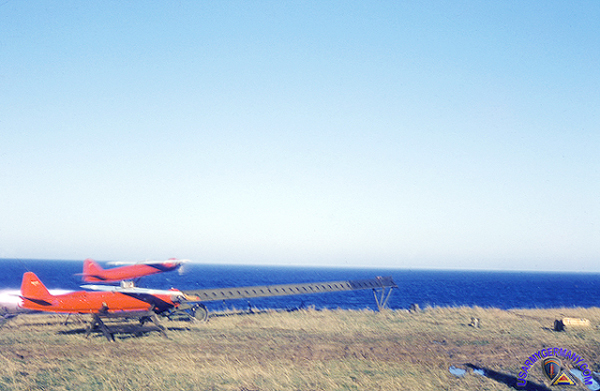 RCATs in use at the Todendorf Range, c. 1955 (Elvin Pauls) |
||||||||||||||||||||||||||||||||||||||||||||||||||||||||||||||||||||||||||||||||||||||||||||||||||||||||||||||||||||||||
| Controlled by Radio Launched with JATO units or conventional cables, the planes are controlled from the ground with a jeep-mounted radio transmitter. The "pilot" operates a "stick" on the control box to guide the small aircraft on its course. A gyro unit in the RCAT receiver helps maintain level flight. "They snap roll, dive, loop and spin," according to land-bound navigator Sgt Walter M. Frye. "They make a pretty tough target for even the best artillery outfits." A device as unique as the airplane itself is utilized to land the aircraft. At a signal from the ground, the powerful engine sputters into silence, a trap door opens in the fuselage and a large parachute billows free to lower the plane gently to earth. "Average flight-life of an RCAT is nine or ten hours," according to 1st Lt Dudley D. Yost, CO of the 49th. "We repair what we can. The rest goes in for salvage." "They take quite a beating up there," added Palm. "The smaller guns aren't too bad, but once those Skysweepers start banging away at Todendorf, these little RCAT's don't last too long. A near hit is enough to damage them beyond repair." During their brief employment the miniature planes present a highly realistic and maneuverable target for 7th Army's aerial gunners, whether flying free or trailing 15 yards of target sleeve fluttering 100 yards behind. Less than a hundred aerial experts maintain these money-saving targets at Grafenwoehr and Todendorf ranges. Yost heads the 50-man 49th Det, and 2nd Lt Joseph E. Lynch commands the 25 soldiers of the 53d. |
||||||||||||||||||||||||||||||||||||||||||||||||||||||||||||||||||||||||||||||||||||||||||||||||||||||||||||||||||||||||
|
|
||||||||||||||||||||||||||||||||||||||||||||||||||||||||||||||||||||||||||||||||||||||||||||||||||||||||||||||||||||||||
| Related Links: |
||||||||||||||||||||||||||||||||||||||||||||||||||||||||||||||||||||||||||||||||||||||||||||||||||||||||||||||||||||||||
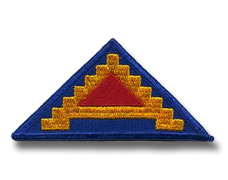
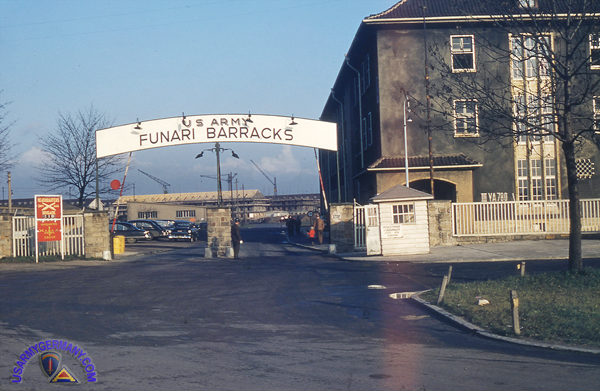
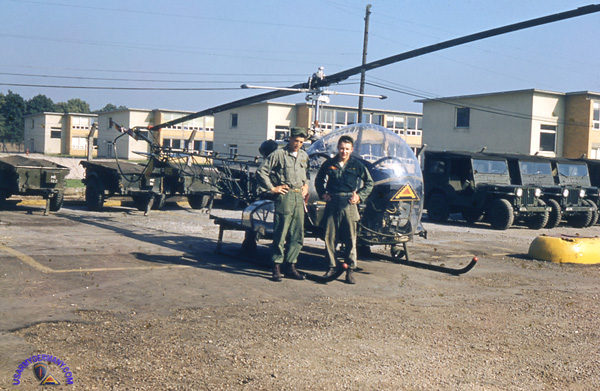
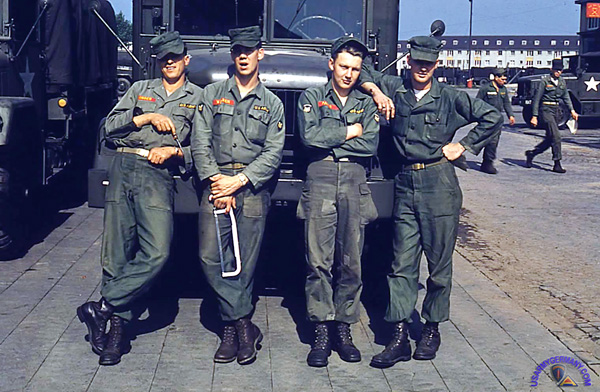
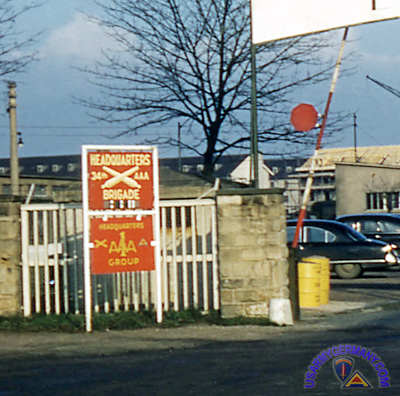 34th AAA Bde sign at main gate
34th AAA Bde sign at main gate 







